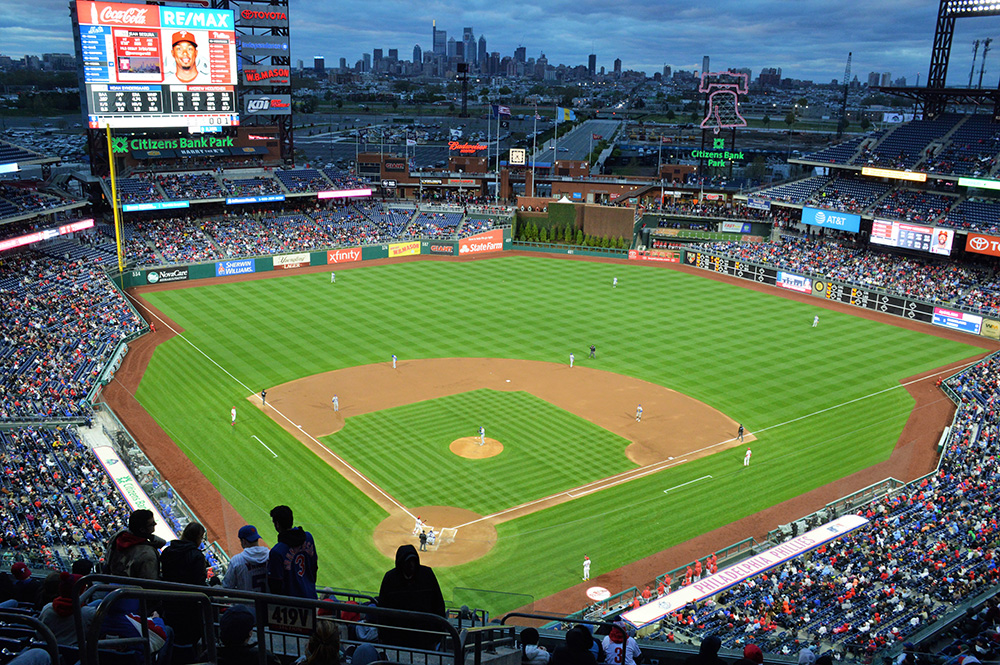When J.D. Martinez signed his five-year, $110 million contract with the Boston Red Sox two years ago, it included multiple opt-outs, the first of which came this offseason. Martinez could continue with his current deal, which will pay $62.5 million over the next three seasons, or take a $2.5 million buyout and become a free agent, likely with a qualifying offer attached. Martinez has elected to stay with the Red Sox under his current contract, as first reported by Jeff Passan and Jon Heyman.
Martinez has certainly lived up to his end of the bargain in its first two years. In 2018, he put up a six-win season thanks to 43 homers and a 170 wRC+ as the Red Sox won the World Series. While Martinez didn’t come close to matching those numbers in 2019, a 139 wRC+ and 3.2 WAR still made him one of the better hitters in the game. As he heads toward his age-32 season, Martinez seems to have found the comfort of a $62.5 million guarantee more inviting than what might have awaited him on the open market. The move is a bit surprising, but with the Red Sox unlikely to pursue him should he have opted out and the Yankees perhaps out of the mix with their focus on pitching, the number of suitors in the American League in need of a designated hitter, even one as good as Martinez, might not have been as great as needed to significantly improve his current contract.
Of next year’s potential contenders, consider that the Astros, Indians, Twins, A’s, and Angels already have designated hitters pretty much locked in. Which teams remain that might have made big bids on Martinez? The Rangers or the White Sox perhaps, though the former would have had to cut bait with Shin-Soo Choo while the latter’s decision to extend Jose Abreu a qualifying offer probably would have made Martinez a less good fit. The Royals and Tigers, as well as the non-Yankees and Red Sox teams in the AL East, are either ultra-frugal (the Rays) or unlikely to be competitive next season (the Orioles and Blue Jays). The Mariners didn’t seem like a great fit for the same reason as that AL East duo, and the National League was likely off limits given Martinez’s defensive issues. The risk of the market drying up was reasonably high, and with another opt-out after next season, a good 2020 would position Martinez to only have to beat two years and just under $40 million.
In our Top 50 Free Agents list, where Martinez ranked fifth assuming that he would opt out, Kiley McDaniel predicted the DH would garner three years and $77 million as a free agent, while the crowd predicted about $10 million more. Those are reasonable forecasts, but the upside seems to have ended up being worth less than the potential downside. This what Kiley had to say:
I prefer Grandal as a player since he’s younger and has a much greater margin for error, but am projecting Martinez for a bit more money since he would be opting out of three years and $62.5 million to hit free agency. With another opt out after 2020, he could also effectively opt in for a one year and $23.75 million before hitting the market again. He’ll only opt out if he had very good reason to believe that there was at least $70 million out there for him.
The decision shows Martinez’s confidence level. Meanwhile, Jay Jaffe, in his free agent blurb for Martinez, raised concerns about his level of play:
Not only did he not hit the ball quite as hard in 2019 — his exit velocity dipped from 93.0 to 91.3, while his xwOBA dropped from .421 to .401 — he did far less damage against four-seam fastballs 95 mph or higher; over the past three seasons, his xwOBA against such pitches has dropped from .505 to .473 to .351, while his xwOBA against all four-seamers has fallen from .535 to .476 to .419. Between the suggestion that his bat is slowing down as he moves into his mid-30s and his defensive liabilities (-15.1 UZR and -17 DRS over the past three seasons), he could find the market less hospitable than his last time around.
While rumors swirl about the future of Mookie Betts, Alex Speier notes that the Red Sox could try to see what the market holds for Martinez.
While Martinez is a good bet to over-perform the value of his contract, the downward trend noted by Jay, plus the potential dearth of suitors as noted above, could make finding a trading partner difficult. If the Red Sox are only interested in dumping the salary, they shouldn’t have to try too hard to find a taker, but if they are looking to add talent in the deal as well, it could prove difficult. (Why the Red Sox feel the need to cut salary and move talent when they have a contending team in a tough division is a reasonable question.)
With Martinez back in the fold, the Red Sox have a luxury tax payroll of roughly $236 million. Taxes will add another $15 million to Boston’s spend if they make no moves. Trading Martinez would save his $23 million salary, plus another $12 million in taxes. Meanwhile, trimming three wins from the roster without an increase elsewhere will reduce Boston’s chances of making the playoffs. The club will have to decide where its priorities lie.
J.D. Martinez is a good hitter who earned his $110 million contract and all the provisions that came with it. He’s elected not to exercise his opt-out this winter and, at least for now, will stay with the Red Sox under the terms of that deal. It’s proved beneficial to both parties, though so some self-imposed budgetary constraints might end up putting Boston in a difficult spot this offseason.

